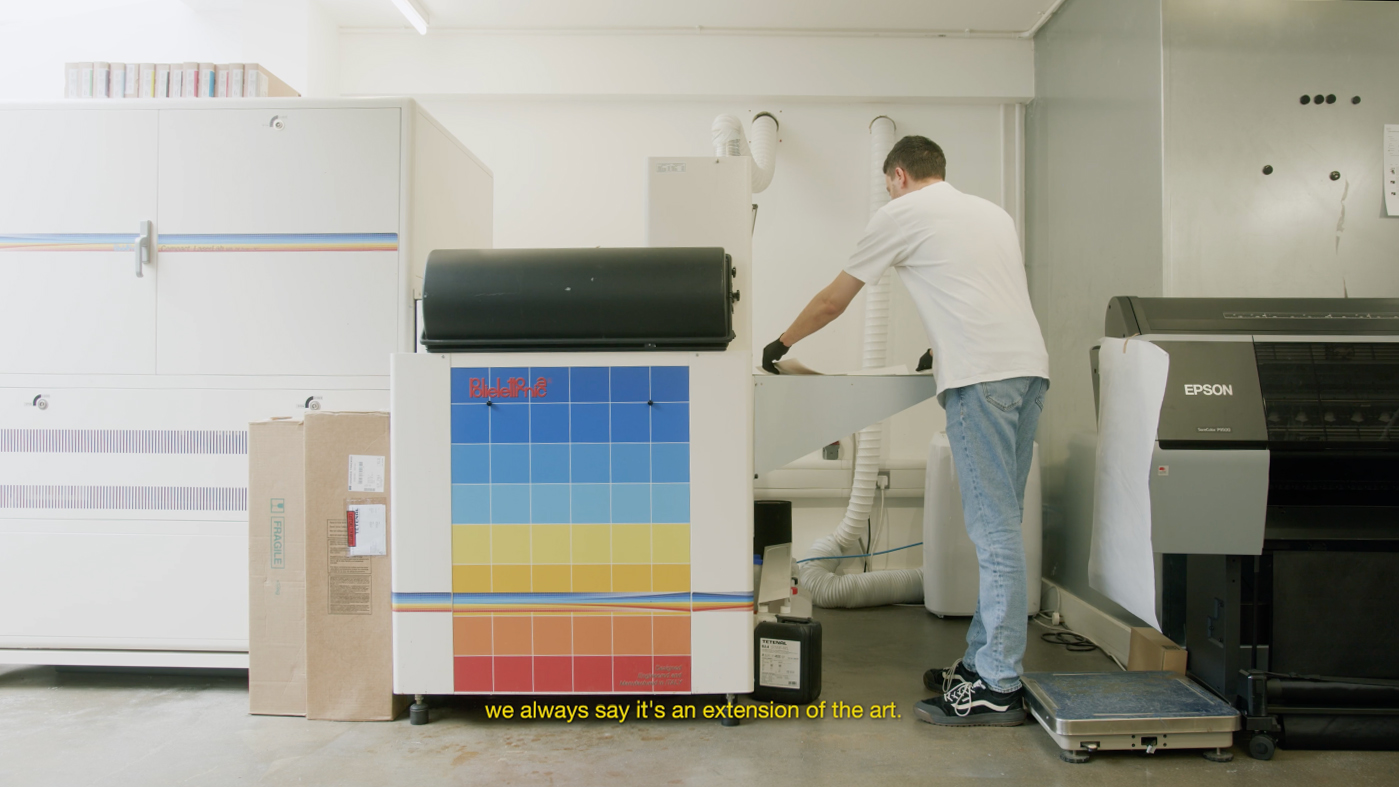© Two Hills Studio
Beyond Print co-founder Faraz Ahmad talks to Louise Long about the nitty-gritty of the framing process and the latest trends among photographers
No fewer than eight months of daily experiments were undertaken before Faraz Ahmad and his business partner, Osmen Ahmed plucked up the courage to approach their first gallery as new-to-market picture framersSix years on, having “never looked back”, Beyond Print is now the UK’s industry leading fine art printers and framers, with a team of 18 full-time staff working across 4,500 sq. ft of East London studio space. From large exhibitions to five-star hotels, luxury apartments to auction houses, Beyond Print’s projects are as diverse as the frames they offer: from off-the-shelf designs to handcrafted frames, in a dizzying multitude of finishes. This is not omitting the fine art printing, retouching, and film scanning and processing they offer “for the traditionalists”.
Ahmad revels in the range of talents he still encounters on a working day: from MA graduates to established photographers; curators, architects, interior designers, and art consultants; as well as institutions such as the Tate Modern, the V&A, Sotheby’s and David Bailey Studio, to name a few. Many others are too formidable to be revealed, Ahmad says.
© Two Hills Studio
Projects can often take years to complete, Ahmad continues, and not without their trials along the way. “Getting all the various people on the project on the same page can be challenging. But seeing hundreds of unique pieces hung in a huge space is hugely rewarding. Working with some of the biggest names in the industry never gets boring”. Next month, he will be flying to LA to hand over a large edition of prints for a renowned photographer . Indeed, it is not usual for pieces to be couriered as far afield as Paris, Italy, Switzerland, Singapore, the USA and Dubai, he adds. Whilst in London, Beyond Print’s expertise and creative outlook has seen them partner with the BJP IPA Winners’ exhibitions in London: at (now closed) Seen Fifteen Gallery, for the exhibition of the 20 single winning images, and for Hajar Benjida’s Atlanta Made Us Famous show at TJ Boulting in winter 2022-3, the winner of the solo show category. From small works with sleek, laser-thin black frames, to large-scale works encased in deep, brooding box frames, each of the bespoke crafted frames help to play a role in the viewer’s experience of Benjida’s work.
The reasons for framing a picture are twofold, explains Ahmad: practical and creative. Primarily, a good-quality frame provides both the physical protection from the outside world, as well as long-term conservation for an artwork — achieved via acid-free, archival papers and conservation framing methods, including UV protective glass. These standards are “one of the main differences between a high street and a bespoke framers” says Ahmad. The secondary, creative element of the task, then, is not only about aesthetic choices, but about what that style conveys. Years of experience as a fine art and professional photo lab affords the team at Beyond Print both understanding and instinct for how to handle an artwork.
“Framing is more than a way of getting your artwork on the walls. It is an extension of the artist’s work”
Years of experience as professional fine art specialists have afforded Ahmad and his team an instinct for the art of framing. “Most of the time the team will know straight away what would look and feel right” says Ahmad. And for many artists or curators, the choice to work with a bespoke framers is integral to the production. First, paper types are chosen, then it’s a series of decisions around glazing, mounting (traditional, box, floating or tray) and material. Surfaces can be stained or waxed, to compliment an interior space, or even spray-painted with a particular Pantone, to match a tone in an artwork with utmost precision. Ahmad has witnessed several stylistic trends amongst photographers and photographic galleries. Frames with clean, straight lines; box frames, and narrow profiles with depth are in favour, as well as black or dark stained wood finishes – a move away from the all-white, matt, spray-painted tendency of previous years. There has also been a recent uptick in dry-mounted prints on aluminium, or prints floated in a box frame, with a shadow gap behind, Ahmad reveals.
Truer than trends is the fact of each project being a unique collaboration – a carefully choreographed dance between picture and frame. Examples are far and wide: a dark-stained oak frame made to cloak a sultry rainfall image by Tyler Shields, for Imitate Modern gallery; a spray-painted tulip frame with ultra-thick mount boards, for Gilles Bensimon’s colourful synchronised swimmers; or Christian Jago’s Beyond the Mists series, printed on C-type Metallic paper and mounted to aluminium, yielding a contemporary canvas for his dense, complex images. Each is a uniquely conceived production.
Styles come and go, but what centuries of hanging artworks has taught us is that a good frame stands the test of time. “Framing is more than a way of getting your artwork on the walls. It is an extension of the artist’s work”, says Ahmad. It’s a consideration of style and material, choices around sustainability – and of course durability. The mistake would be to consider a frame simply the edge of an artwork, or its boundary between viewer and artist. Far from it: a frame is a portal — indeed an opening statement on the work — and for the frame’s maker, a boundless horizon of creative possibilities.

